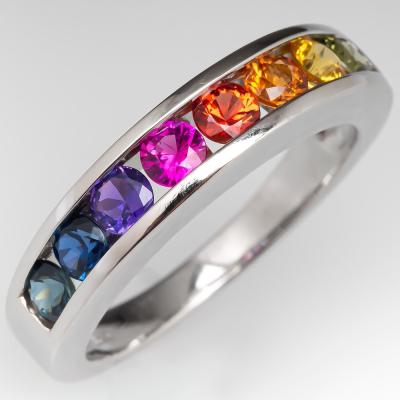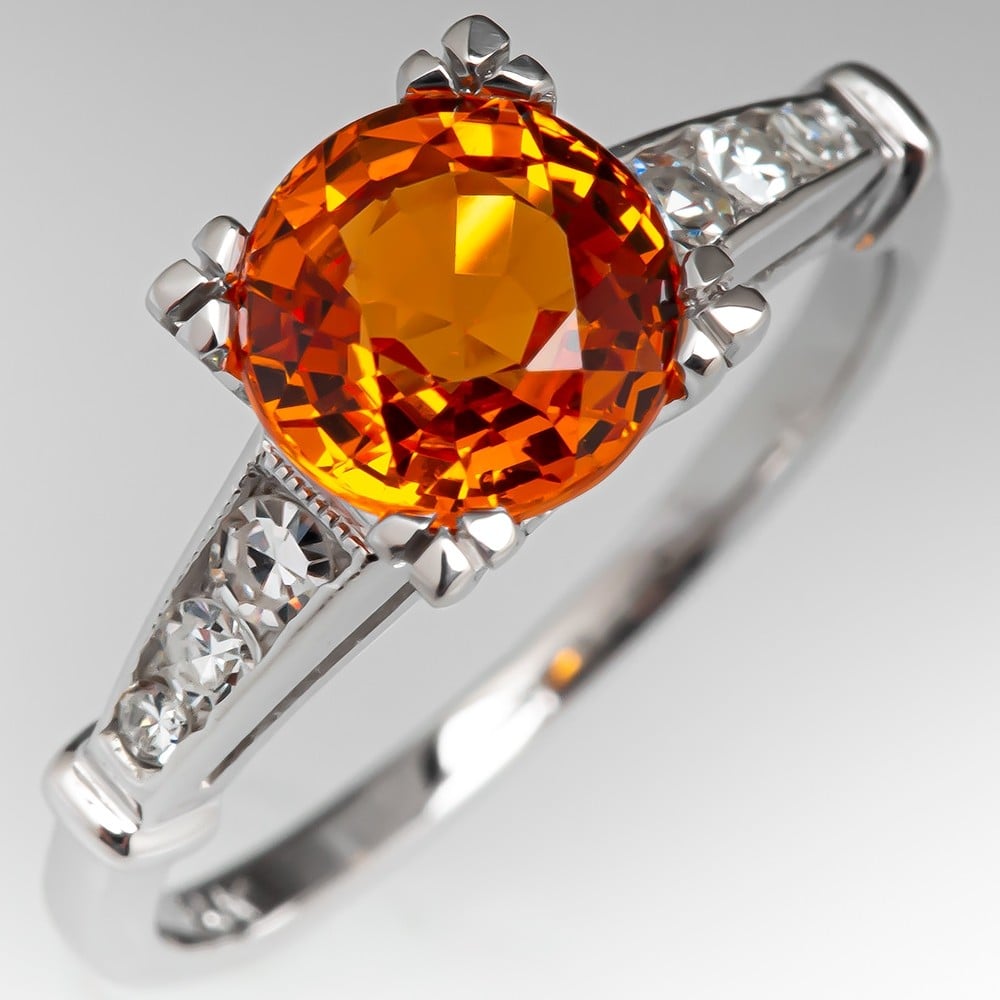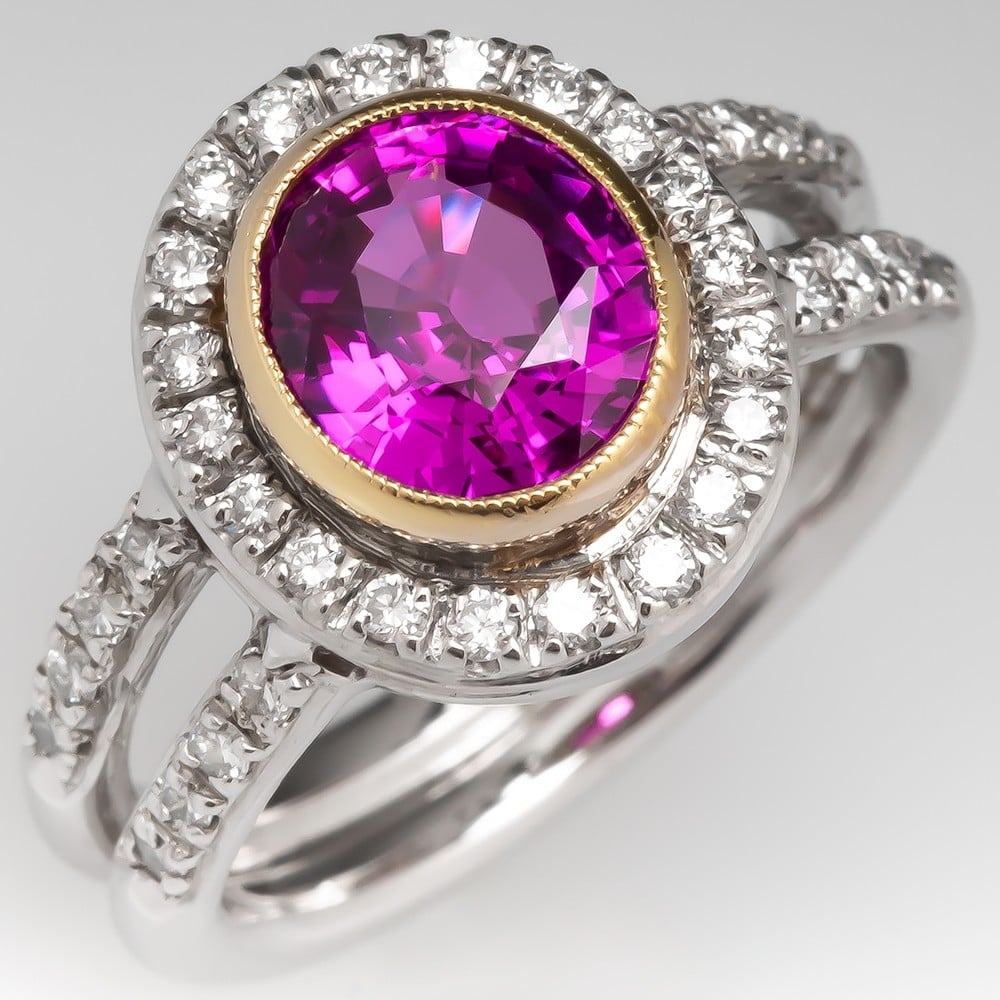
Ge Sapphire is the gemological term for the mineral corundum. The most famous corundum varieties are blue sapphires and rubies. However, sapphires come in just about every color imaginable. In this article, you will learn about the mineralogical properties of sapphires. Additionally, you'll learn the factors experts use to determine the value of gem-quality sapphire.
Sapphire is the gemological term for the mineral corundum. The most famous corundum varieties are blue sapphires and rubies. However, sapphires come in just about every color imaginable. In this article, you will learn about the mineralogical properties of sapphires. Additionally, you'll learn the factors experts use to determine the value of gem-quality sapphire.
The Mineralogical Properties of Sapphire
The mineral corundum is comprised of aluminum oxide. Supremely durable with a hardness second only to diamonds, sapphires form in igneous and metamorphic rocks. They typically form in hexagonal (six-sided) or tabular (four-sided), elongated crystals which extrude from their host rocks. (source) Trace amounts of different elements embedded within the crystal structure produce different colors. Pure corundum is colorless and rarely used in jewelry. Corundum with a minuscule amount of chromium turns pink. Higher amounts of chromium produce rich red colors, at which point experts consider them rubies. Trace amounts of titanium and iron produce blue sapphires. Depending on the quantities and combination of these elements, the blues range from pale to dark, and from greenish to violet. Sapphires literally come in every color of the rainbow, and then some. Blue, red, violet, pink, orange, yellow, green, teal, aqua, white, gray, black, and all variations in between. 
Quality Factors for Sapphires
Just as with diamonds, sapphires must meet certain standards to qualify as high-grade gemstones. The 4Cs of diamonds - color, clarity, carat weight, and cut - are the same measures used to determine the value of an individual sapphire.
Color
Of course, color is the most important factor that determines the value of sapphires. The most valuable stones possess vivid saturation without dead spaces or unsightly color patches. Sapphire is pleochroic, showing lighter or more intense colors when viewed from different angles. As such, it's important that a faceted stone appear pleasing to the eye when viewed from all directions. Some sapphires present with color zones, obvious light and dark patches that seriously impact value. When cut properly, these color zones enhance rather than detract from the beauty of the stone. However, when cut poorly, color zones can appear to dissect a sapphire in half, detracting from its beauty and value. In the jewelry industry, sapphires that are red are called rubies. Blue sapphires are always referred to as simply that, blue sapphires. Gemologists refer to every other color as Fancy. Fancy yellow sapphire, fancy pink sapphire, etc.
Clarity
The highest quality sapphires demonstrate exceptional clarity, with few or no inclusions. However, most sapphires contain tiny needle inclusions called rutile. When these needles cluster closely together, gemologists refer to it as silk. (source) Other inclusions that alter clarity include foreign mineral crystals, color zoning, color banding, and internal breaks in the crystals. (source) All such inclusions diminish transparency, and therefore clarity. For the most part, as clarity decreases, so does value. Especially if such inclusions negatively impact a sapphire's durability. (source) One exception occurs in the most famous corundum variety, Kashmir blue sapphires. A unique formation of inclusions within these gorgeous blue stones gives them their exceptional velvety blue color. In this case, the imperfection renders them perfect. Indeed, Kashmir sapphires remain the gold standard by which experts measure all other blue sapphires. 
Carat Weight
Gemologists weigh sapphires in the same way they weigh diamonds. However, sapphires prove denser than diamonds. Therefore, a 1-carat sapphire will measure smaller in diameter than a 1-carat diamond. As with diamonds, the higher the carat weight of a sapphire, the higher the price. Of course, only if it measures up in color and clarity. Color trumps all, so a small sapphire of exceptional color will sell for more than a larger sapphire with poor color.
Cut
To cut a sapphire, a cutter takes into consideration all of the mineralogical factors. He pays particular attention to color zoning and pleochroism. A skilled cutter ensures that the final cut showcases the most spectacular color features, while minimizing those that would detract from the stone's beauty. Cutters also maximize color by centering the culet so that it lies directly beneath the area with the most concentrated coloring. (source) Finally, cutters ensure that they leave no obvious windows. Windows allow light to pass all the way through the stone instead of reflecting back to the surface. To the eye, a window looks like a dead, matte black spot on the surface. Of course, obvious windows and other poor cutting decisions diminish the value of a sapphire. With this knowledge under your belt, you are well on your way to being able to make confident choices when purchasing a sapphire for yourself or a loved one. If you have any other questions about purchasing these beautiful gems, please don't hesitate to give us a call. ~Angela Magnotti Andrews
